Showing Spotlights 201 - 208 of 336 in category All (newest first):
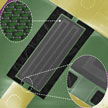 The key challenges associated with the development of high performance MEMS and NEMS resonators for RF wireless communication and sensing applications are the isolation of energy-dissipating mechanisms and scaling of the device volume in the nanoscale size-range. Researchers show that graphene-electrode based piezoelectric NEMS resonators operate at their theoretical 'unloaded' frequency-limits, with significantly improved electromechanical performance compared to metal-electrode counterparts, despite their reduced volumes.
The key challenges associated with the development of high performance MEMS and NEMS resonators for RF wireless communication and sensing applications are the isolation of energy-dissipating mechanisms and scaling of the device volume in the nanoscale size-range. Researchers show that graphene-electrode based piezoelectric NEMS resonators operate at their theoretical 'unloaded' frequency-limits, with significantly improved electromechanical performance compared to metal-electrode counterparts, despite their reduced volumes.
Jun 16th, 2015
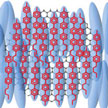 Graphene acts as an excellent conductor to electric fields along its flat surface and as an insulator perpendicular to the surface. Due to this anisotropic nature of graphene's conductivity, graphene flakes have potential applications in nanoscale switches and nano-electromechanical systems. Controlling the orientation of graphene flakes therefore has drawn a great deal of research interest in nanotechnology. In new work, researchers have developed a technique to control the orientation of graphene flakes at the nanoscale by using a nematic liquid crystal platform.
Graphene acts as an excellent conductor to electric fields along its flat surface and as an insulator perpendicular to the surface. Due to this anisotropic nature of graphene's conductivity, graphene flakes have potential applications in nanoscale switches and nano-electromechanical systems. Controlling the orientation of graphene flakes therefore has drawn a great deal of research interest in nanotechnology. In new work, researchers have developed a technique to control the orientation of graphene flakes at the nanoscale by using a nematic liquid crystal platform.
May 25th, 2015
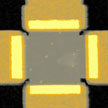 Magnetic field sensors are in very high demand for precise measurements of position, proximity and motion. The most commonly used Hall Effect devices are fabricated with silicon. The sensitivities of these sensors - voltage and current - depend on the device materials electronic properties such as charge carrier mobility and density. However, for futuristic advanced applications higher sensitivity Hall sensors are required than can be achieved with silicon. Researchers now have set a new world record for the sensitivity of Hall sensors using highest quality graphene encapsulated in hexagonal boron nitride.
Magnetic field sensors are in very high demand for precise measurements of position, proximity and motion. The most commonly used Hall Effect devices are fabricated with silicon. The sensitivities of these sensors - voltage and current - depend on the device materials electronic properties such as charge carrier mobility and density. However, for futuristic advanced applications higher sensitivity Hall sensors are required than can be achieved with silicon. Researchers now have set a new world record for the sensitivity of Hall sensors using highest quality graphene encapsulated in hexagonal boron nitride.
May 21st, 2015
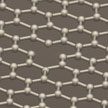 Counter intuitive to our idea of 'perfection equals best performance', researchers have shown that defects in nanocarbons could provide a breakthrough for increasing the quantum capacitance. By subjecting graphene layers to a reactive-ion etching process, the team has poked holes into graphene to create holey graphene, which can change the microscopic distribution of electrons and thereby increase the quantum capacitance of graphene by at least fourfold.
Counter intuitive to our idea of 'perfection equals best performance', researchers have shown that defects in nanocarbons could provide a breakthrough for increasing the quantum capacitance. By subjecting graphene layers to a reactive-ion etching process, the team has poked holes into graphene to create holey graphene, which can change the microscopic distribution of electrons and thereby increase the quantum capacitance of graphene by at least fourfold.
May 5th, 2015
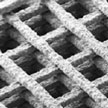 From a 3D printing perspective, graphene has been previously incorporated into 3D printed materials, but most of these constructs comprise no greater than about 20 volume % of the total solid of the composite, resulting in electrical properties that are significantly less than what has been achieced in new work. Here, researchers show that high volume fraction graphene composite constructs can be formed from an easily extrudable liquid ink into multi-centimeter scaled objects.
From a 3D printing perspective, graphene has been previously incorporated into 3D printed materials, but most of these constructs comprise no greater than about 20 volume % of the total solid of the composite, resulting in electrical properties that are significantly less than what has been achieced in new work. Here, researchers show that high volume fraction graphene composite constructs can be formed from an easily extrudable liquid ink into multi-centimeter scaled objects.
Apr 28th, 2015
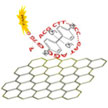 While the actual toxicity of Bisphenol A (BPA) is still debated, the direct measurement of BPA is difficult because of the weak response given by conventional electrochemical sensors, and current optical analysis methods are susceptible to the influence of interfering substances. A novel aptamer/graphene oxide FRET biosensor now provides a method for the rapid detection and risk assessment of BPA with high sensitivity and selectivity.
While the actual toxicity of Bisphenol A (BPA) is still debated, the direct measurement of BPA is difficult because of the weak response given by conventional electrochemical sensors, and current optical analysis methods are susceptible to the influence of interfering substances. A novel aptamer/graphene oxide FRET biosensor now provides a method for the rapid detection and risk assessment of BPA with high sensitivity and selectivity.
Apr 13th, 2015
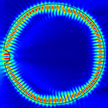 Molybdenum disulfide's (MoS2) semiconducting ability, strong light-matter interaction and similarity to the carbon-based graphene makes it of interest to scientists as a viable alternative to graphene in the manufacture of electronics, particularly photoelectronics. In particular, MoS2 has excellent optical properties when deposited as a single, atom-thick layer - unlike graphene, it emits light when excited; albeit relatively poorly. In order to realize the potential of atomically thin MoS2 as a nanoscale active material in a light source, a considerable enhancement of its emission efficiency is necessary.
Molybdenum disulfide's (MoS2) semiconducting ability, strong light-matter interaction and similarity to the carbon-based graphene makes it of interest to scientists as a viable alternative to graphene in the manufacture of electronics, particularly photoelectronics. In particular, MoS2 has excellent optical properties when deposited as a single, atom-thick layer - unlike graphene, it emits light when excited; albeit relatively poorly. In order to realize the potential of atomically thin MoS2 as a nanoscale active material in a light source, a considerable enhancement of its emission efficiency is necessary.
Mar 12th, 2015
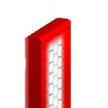 Heat energy can be converted into electricity with very high efficiency through a temperature-induced electron flow process known as thermionic emission. Thermionic energy converters have been used with different heat sources, all of them requiring operation at high temperatures above 1500 K. A new study indicates that heat temperature can be lowered by an order of magnitude if using graphene as hot cathode. The findings indicate that a graphene-based cathode thermionic converter operating at 900 K could reach an efficiency of 45%.
Heat energy can be converted into electricity with very high efficiency through a temperature-induced electron flow process known as thermionic emission. Thermionic energy converters have been used with different heat sources, all of them requiring operation at high temperatures above 1500 K. A new study indicates that heat temperature can be lowered by an order of magnitude if using graphene as hot cathode. The findings indicate that a graphene-based cathode thermionic converter operating at 900 K could reach an efficiency of 45%.
Mar 5th, 2015
 The key challenges associated with the development of high performance MEMS and NEMS resonators for RF wireless communication and sensing applications are the isolation of energy-dissipating mechanisms and scaling of the device volume in the nanoscale size-range. Researchers show that graphene-electrode based piezoelectric NEMS resonators operate at their theoretical 'unloaded' frequency-limits, with significantly improved electromechanical performance compared to metal-electrode counterparts, despite their reduced volumes.
The key challenges associated with the development of high performance MEMS and NEMS resonators for RF wireless communication and sensing applications are the isolation of energy-dissipating mechanisms and scaling of the device volume in the nanoscale size-range. Researchers show that graphene-electrode based piezoelectric NEMS resonators operate at their theoretical 'unloaded' frequency-limits, with significantly improved electromechanical performance compared to metal-electrode counterparts, despite their reduced volumes.
 Subscribe to our Nanotechnology Spotlight feed
Subscribe to our Nanotechnology Spotlight feed





